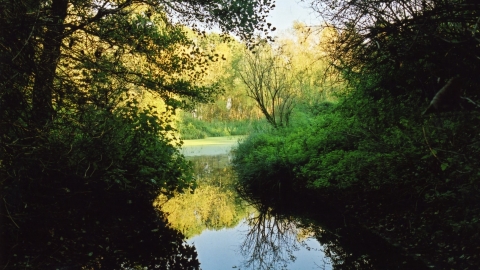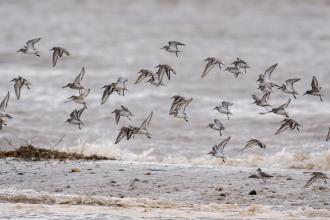

Lincolnshire Wildlife Trust
Lincolnshire Wildlife Trust
Friskney Decoy Wood
Know before you go
Dogs
Assistance dogs only
When to visit
Opening times
Open at all timesBest time to visit
April to JulyAbout the reserve
The decoy, the most famous in the East Fen (the last great fen to be drained), survived with diminishing duck catches until 1878 when it finally went out of use. The fen had been a great reservoir for wildfowl but with drainage beginning in 1801 the decoy started to run down. Yet even in 1866 over one thousand ducks were taken, so we can only guess at the numbers caught in its heyday!
The decoy was home to, and worked by, George Skelton senior (1760 - 1840) until he left in 1807. Thereafter the decoy as worked by his sons' grandsons until 1866. The Skeltons were known for being skilful decoy operators and the family members were known to build decoys in many parts of the country. When the last of the Skeltons left, the decoy was worked by a Mr Crowe until 1878. The earliest record we have is that the decoy was described as “Shaws Decoy” on a map by I. Grundy dated 1774.
Surrounding the old decoy pipes is woodland which is on a thin peat soil, mostly consisting of birch, sycamore and Scots pine with rowan, alder, willow and aspen. There are also larch, spruce and Corsican pine. Some woodland may have grown here before draining of the East Fen including a variety of novelty veteran trees, but most of the trees have been planted.
The ground flora is dominated in parts by bracken and buckler-fern. The climbing corydalis, a localised plant in eastern England, occurs throughout the wood.
Over 30 species of birds have bred, and large numbers use the wood in winter for feeding and roosting. The main objectives of management are to maintain and enhance a varied woodland of mainly native trees and to retain the relict decoy pond and pipes as a wetland area.
Nearest postcode PE22 8PU. Please note - postcodes are for the nearest registered address as we are unable to get postcodes for nature reserves.
Location information
Friskney Decoy Wood location and trail

